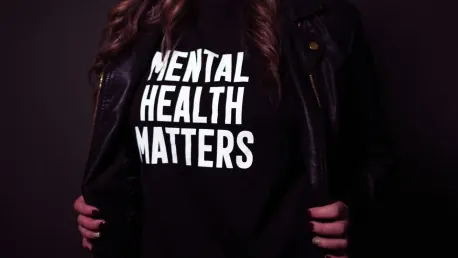The exclusionary discipline practices in schools, such as suspending and expelling students, have long been criticized for being overly punitive and disproportionately affecting certain student groups. Now, new research from the University of Arkansas has provided further evidence that these disciplinary measures not only hinder academic performance but also have significant adverse effects on mental health, particularly among teenagers and young adults. This comprehensive study looks beyond the immediate impacts, revealing how these practices can contribute to long-term issues like depression. With public health implications at the forefront, this research calls for a paradigm shift in school discipline strategies, leaning towards more compassionate and rehabilitative approaches.
Public Health Implications of Exclusionary Discipline
Mental Health Consequences
The findings from the University of Arkansas spotlight an urgent public health issue: the mental toll of exclusionary discipline on students. When students are removed from the school environment, they are deprived of critical social interactions and support systems that are essential during adolescence. The research shows that students who face suspensions or expulsions are more likely to experience depression during their teenage years, a vulnerability that can extend into early adulthood. The educational disruption combined with stigma and isolation can exacerbate underlying mental health conditions, making it difficult for these students to reintegrate into the academic environment successfully.
Moreover, exclusionary practices can create a cycle of disadvantage. Once a student is suspended or expelled, the likelihood of repeating the behavior that led to the disciplinary action increases. The alienation felt during these periods away from school not only impacts mental well-being but also erodes self-esteem and a sense of belonging. This negative spiral not only potentially leads to more severe mental health crises but also deters academic success and future opportunities, thus perpetuating the cycle of disadvantage and exclusion.
Academic Performance and Future Outcomes
In addition to its effects on mental health, exclusionary discipline also correlates with detrimental academic outcomes. The students subjected to these measures often fall behind in their studies, leading to lower standardized test scores and decreased graduation rates. This academic lag is partly because these students miss out on crucial instructional time. The loss of classroom engagement and learning opportunities means students are not only academically disadvantaged but also demotivated, increasing the risk of dropping out of school altogether.
Furthermore, the longer-term impacts on future outcomes cannot be overstated. The educational setbacks resulting from suspensions and expulsions can diminish college prospects and career opportunities, maintaining a trajectory of socio-economic hardships. Therefore, exclusionary discipline practices not only have immediate repercussions but also contribute to systematic inequities that last far beyond the school years. Such revelations necessitate an urgent re-evaluation of disciplinary policies, emphasizing the need for reform that not only considers immediate behavioral corrections but also the long-term well-being of the students.
Alternative Approaches to School Discipline
Understanding Restorative Justice
Restorative justice presents an alternative to the traditional punitive disciplinary methods that have proven to be counterproductive and harmful. Unlike exclusionary practices, restorative justice focuses on building relationships within the school community. It involves the identification of needs, repair of harm, active accountability, and voluntary participation. These principles aim to create a more inclusive environment where all voices are heard and respected, thus fostering a sense of community and shared responsibility. In this approach, the emphasis is on addressing the root causes of behavioral issues rather than simply punishing students for infractions.
Importantly, restorative justice practices are most effective when they are embedded into the culture of the institution rather than used as mere substitutes for traditional discipline. This integration helps to establish a foundation of trust and mutual respect, which can significantly improve both academic achievement and overall school safety. When students feel understood and supported, they are more likely to respond positively to corrective measures and less likely to engage in repeat behaviors that warrant disciplinary action.
Implementation and Benefits
Successfully implementing restorative justice in schools requires a deliberate shift from traditional disciplinary models and a commitment to professional development. Educators and administrators must gain expertise in restorative practices, which entail specific skills such as conflict resolution, mediation, and effective communication. Patience and perseverance are key, as changing disciplinary frameworks is a gradual process that relies on the collective effort of the entire school community.
The benefits of adopting restorative justice are substantial. Schools that have embraced restorative practices report a decrease in behavioral issues and an increase in positive student outcomes. These schools also experience improvements in academic performance, as students feel more supported and engaged. Additionally, the overall school climate becomes more conducive to learning, with enhanced safety and a reduction in incidents of violence and bullying. As a holistic approach, restorative justice not only addresses the immediate behavioral concerns but also promotes the long-term mental health and well-being of students.
Need for Systematic Change
Policy Interventions
The growing consensus that exclusionary discipline is counterproductive underscores the need for policy interventions at various levels of the education system. Policymakers need to prioritize reforms that reduce the reliance on suspensions and expulsions while promoting supportive and rehabilitative alternatives. This shift necessitates revisiting existing disciplinary policies and incorporating provisions for restorative justice practices. Schools must also be provided with the necessary resources and training to transition to these new approaches effectively.
State and federal education agencies need to support research and development in this area to build an evidence-based framework that can guide schools in implementing restorative practices. Funding for pilot programs, professional development, and ongoing evaluation will be crucial to ensure that these initiatives are successful and sustainable. Moreover, there should be mechanisms for accountability and monitoring to track progress and address any challenges that schools may face during the transition.
Long-Term Vision
The exclusionary discipline practices in schools, such as suspending and expelling students, have been widely criticized for being excessively punitive and disproportionately affecting certain student groups. Now, fresh research from the University of Arkansas has provided additional evidence that these disciplinary measures not only impede academic performance but also have significant negative effects on mental health, especially among teenagers and young adults. This comprehensive study looks beyond the immediate impacts, uncovering how these practices can lead to long-term problems like depression and anxiety. With public health concerns taking center stage, this research advocates for a shift in school discipline strategies towards more compassionate and rehabilitative methods. Emphasizing a need for change, the study encourages the adoption of approaches that focus on understanding and addressing the root causes of behavioral issues. By doing so, schools can foster a more supportive and nurturing environment that promotes both academic success and mental well-being for all students.









